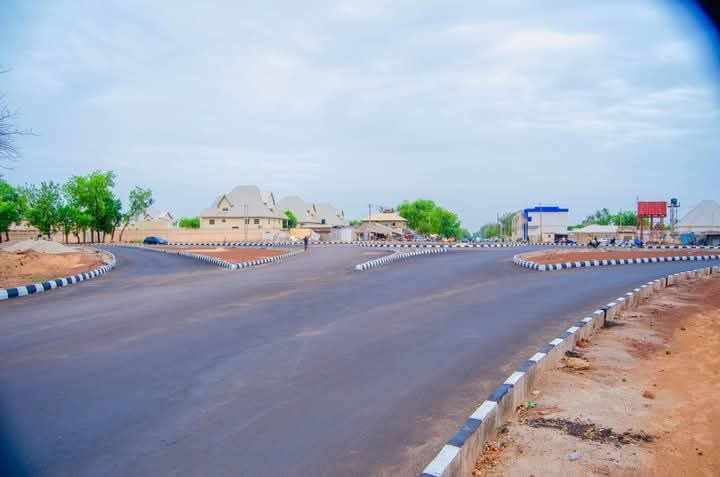Governor Ahmed Aliyu’s decision to construct and expand the road network in Sokoto metropolis is, no doubt, a commendable step towards making Sokoto more functional—easing movement, enhancing economic growth, and ensuring the safe transportation of goods and services.
By Sani Umar
Road infrastructure plays a crucial role in enabling the efficient movement of people, goods, and services, thereby boosting productivity. Governor Aliyu’s commitment to road development is both strategic and timely.
The administration’s core objective is to unlock the state’s potential, particularly in areas that were previously difficult to access and thus left untapped. That narrative has now changed with the construction of roads in such communities. Social and economic activities have revived these areas, improving both productivity and income levels.
For many years, these areas remained desolate and isolated, posing security risks that discouraged people from visiting or residing there—especially after dark.
Some of the locations where these transformative roads have been constructed include: the Shinkafi Road–First Bank axis, Justice Tsamiya Road, Round Mairuwa, Gidan Man Ada, Kaduna Road, the network of roads in Gawon Nama, Arkilla–Girabshi Road, and Hope Uzodimma Road in the Sahara area, among others. These once-neglected neighborhoods are now more populated and economically active.
What is particularly remarkable about these roads is their impact: they ease traffic congestion, promote urban development, improve access to opportunities, and enhance the quality of life by enabling better social interaction—all contributing to the overall well-being of residents.
The expansion and modernization of roads across the metropolis have been widely welcomed by residents. These initiatives are considered unprecedented in the context of Sokoto, as no previous administration—military or civilian—has embarked on such a wide-reaching urban infrastructure drive.
A notable feature of some of these roads, such as those at Gidan Man Ada, Round Mairuwa, and the Kaduna–Sama Road junction, is the incorporation of channelized turn lanes or bypass lanes designed to ease traffic flow. These smart traffic management features help offload pressure from roundabouts, improving both mobility and road safety.
Governor Aliyu’s urban renewal project is timely and reflects a deep understanding of the needs of a growing metropolis. His vision is to transform Sokoto’s physical and economic landscape in line with modern urban planning principles.
There is no doubt that the Governor is laying the foundation for a more modern, efficient, and prosperous Sokoto—poised for long-term growth and development.
Umar is Special Assistant to the Governor on Online Media


